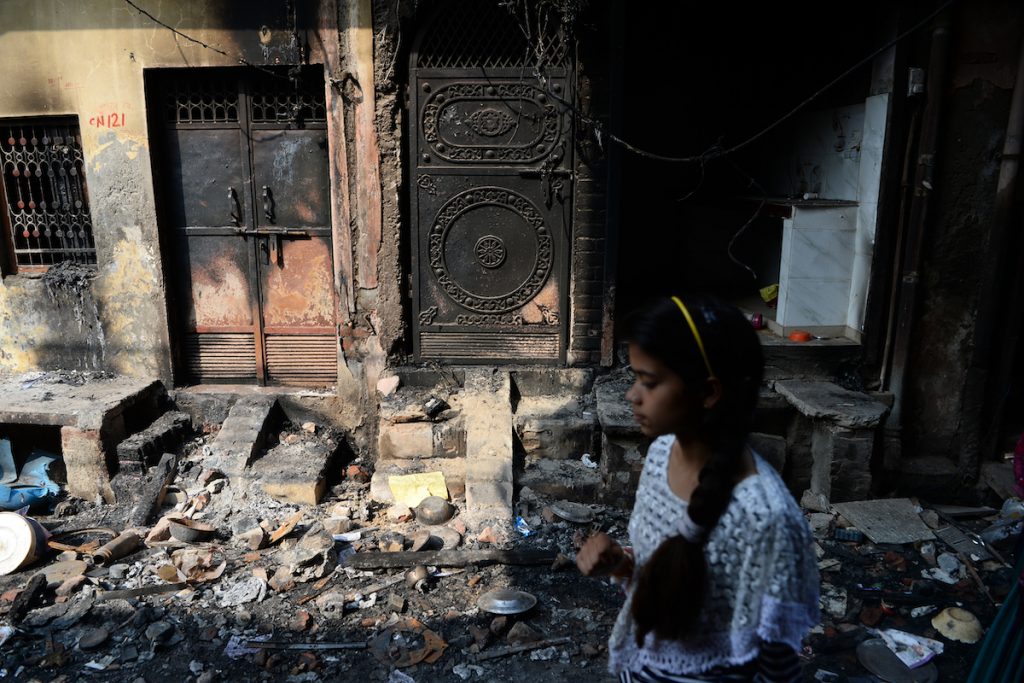India risks greater segregation in its cities after deadly riots in Delhi last week, with minority and poor people likely to be blocked from accessing housing in desirable neighborhoods, human rights experts said.
The Hindu-Muslim clashes in the city’s northeast — the worst communal riots in Delhi for several decades — killed more than 40 people and injured hundreds. Thousands have been displaced after their homes were torched.
Many of those uprooted were Muslims, while there were Hindus among the dead and injured.
The capital city of more than 20 million people is now likely to see greater segmentation along religious lines as has happened in other Indian cities, such as Mumbai and Ahmedabad, said Miloon Kothari, a housing and human rights expert.
“We generally see greater ghettoization in a city after a riot because of fear and insecurity, with city authorities themselves sometimes reorganizing neighbourhoods that entrench that segregation,” he told the Thomson Reuters Foundation.

“Apartheid cities are being created due to political, planning and gentrification processes that divide communities further, impoverish the poor, and makes it easier to target vulnerable communities again.”
Displacements caused by flooding, beautification of cities, and major sporting events such as the 2010 Commonwealth Games in Delhi and the 2016 Rio Olympics, also led to ghettoization of the poor, said Kothari, a former United Nations special rapporteur for adequate housing.
Delhi has long drawn migrants from neighboring states, who often live in informal settlements because of high rents.
Like in other Indian cities, Delhi’s informal rules and deep-rooted biases also discriminate against religious minorities and even unmarried people, or those with certain food preferences or professions.

Deadly communal clashes in Mumbai in 1992-93 and in the western city of Ahmedabad in 2002, led to Muslims being pushed out of mixed neighborhoods to the fringes of the city, said Darshani Mahadevia, a professor at Ahmedabad University.
“The Muslim poor especially … choose to live in all-Muslim neighbourhoods because they feel insecure,” she said on the sidelines of a land conference in Delhi.
“Segregation keeps the communal pot boiling for political reasons also,” she said, citing a law in the western state of Gujarat that restricts Muslims and Hindus from selling property to each other in areas deemed as sensitive.
Often, minority neighborhoods have poor infrastructure and inadequate housing, said Mahadevia, adding that residents also face difficulties securing bank loans and even taxi rides.
The choice between living in a “ghetto or mixed neighborhood” was a difficult one for many Muslims, writer and journalist Ghazala Wahab said on Twitter.
Families often had to weigh the risk of their home being torched against a better life, said Wahab, whose own family moved to a more modern “Hindu” area from a ghetto — where conditions had since worsened.
“That’s not living, that’s just existing,” she said.
Written by Rina Chandran for Thomson Reuters Foundation, the charitable arm of Thomson Reuters, that covers humanitarian news, women’s rights, trafficking, property rights, and climate change.







